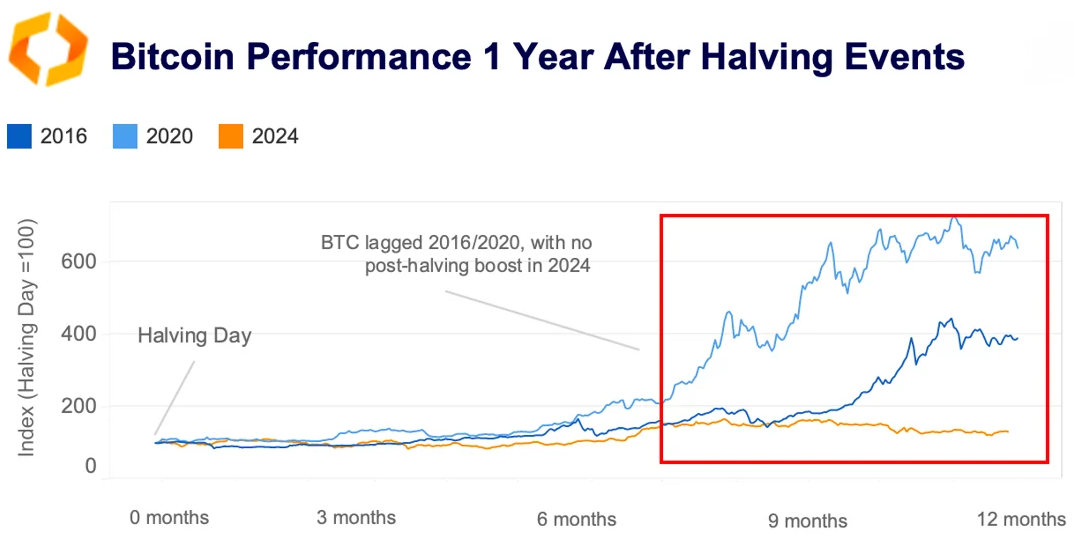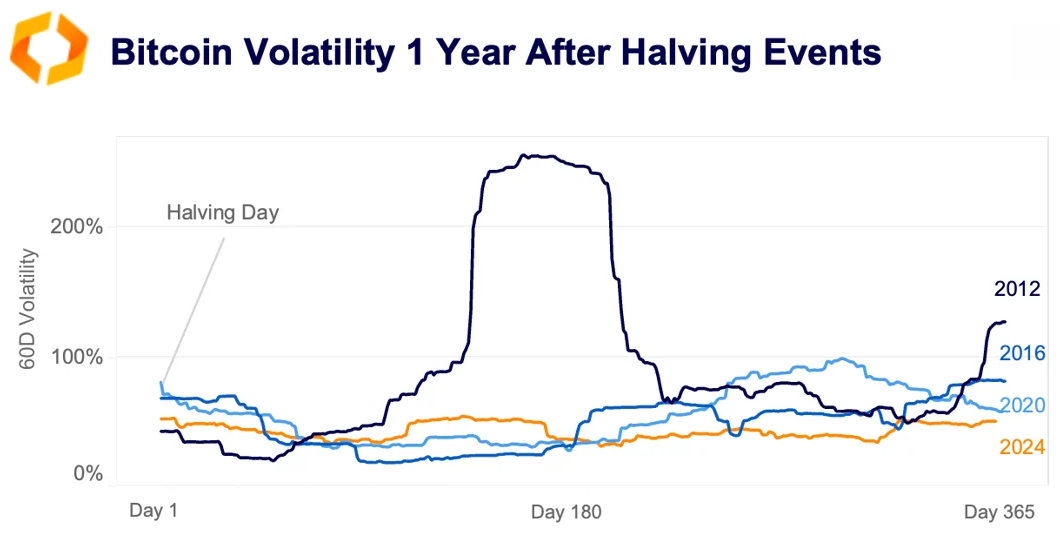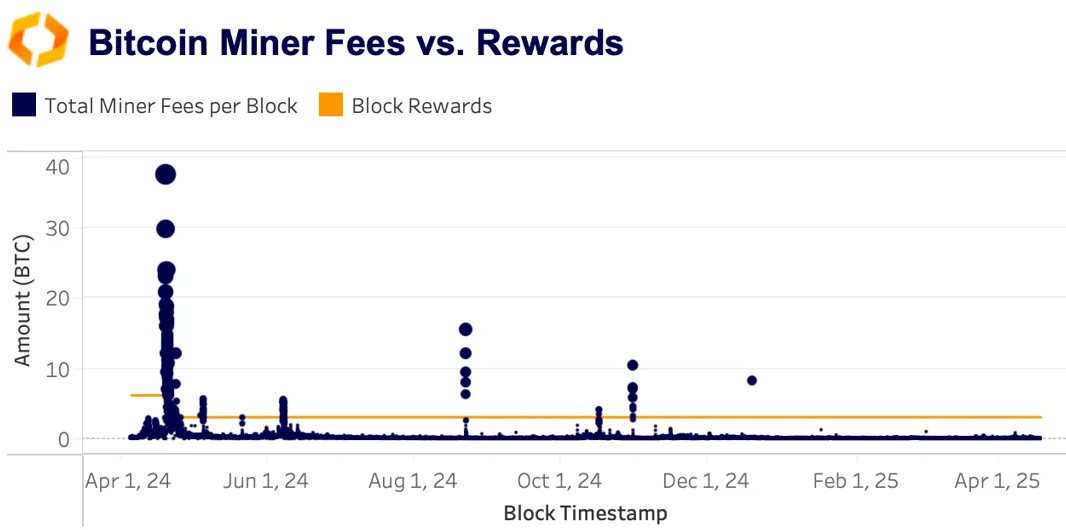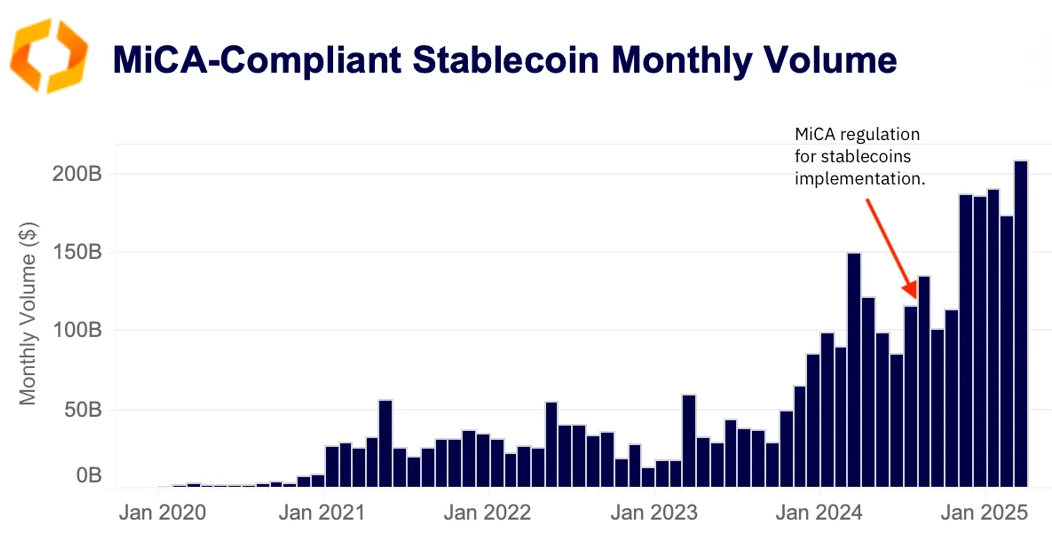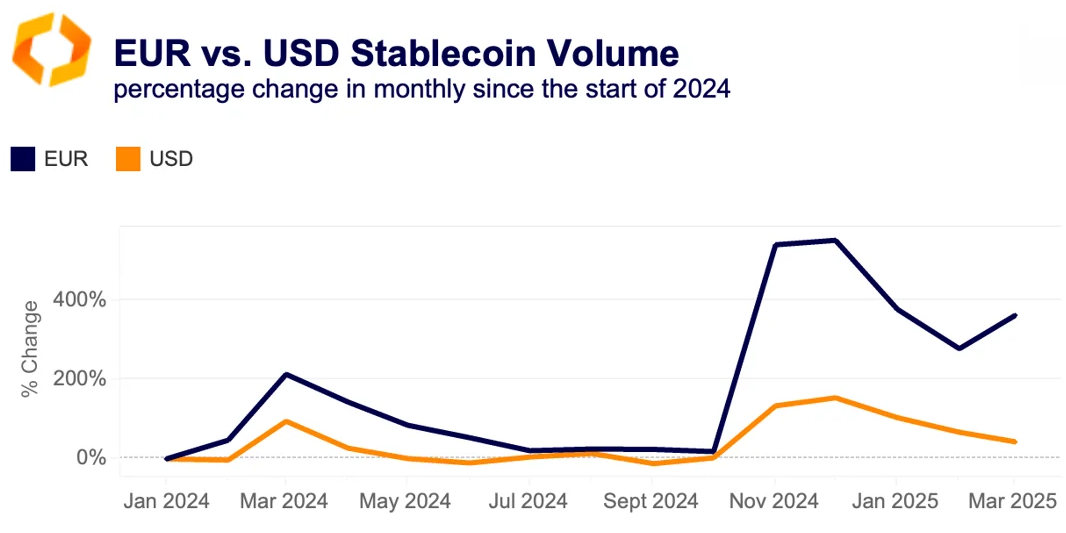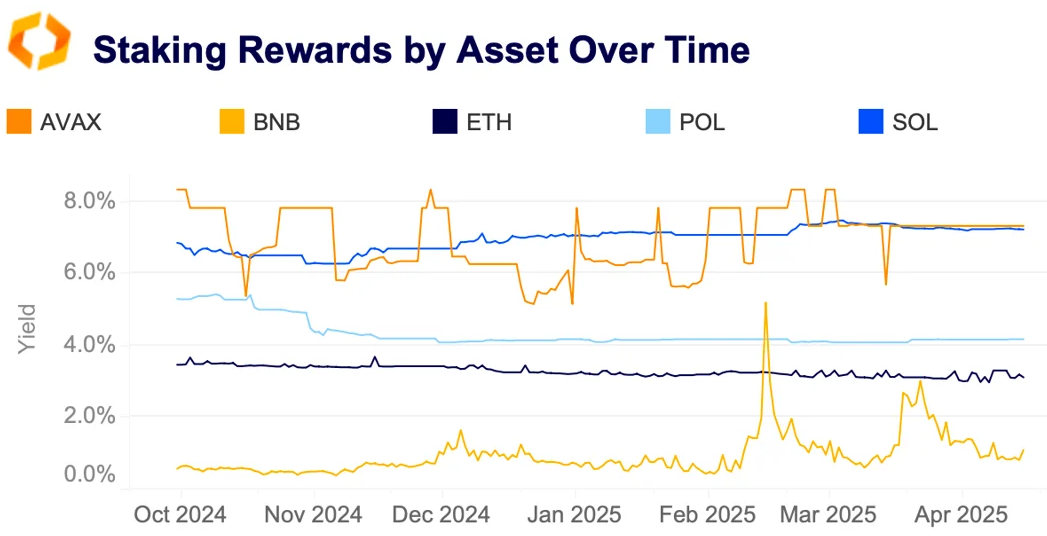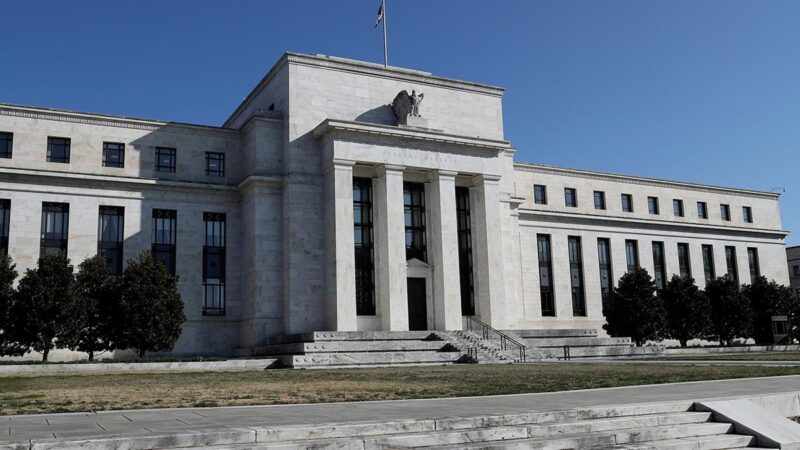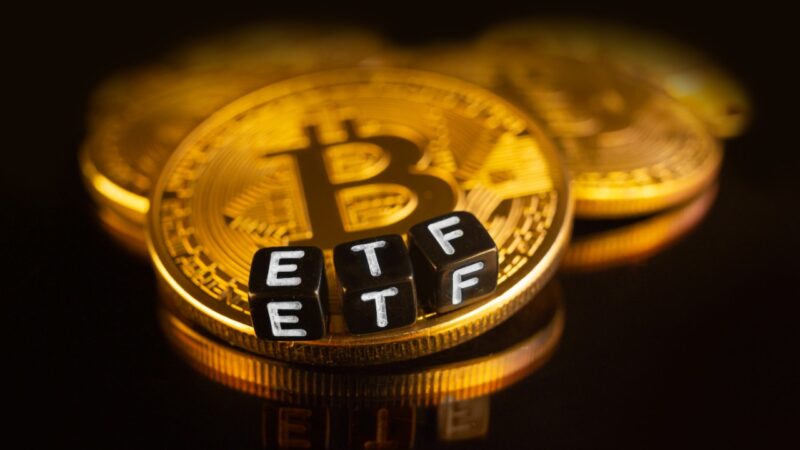Bitcoin-Halving anniversary: This cycle was different
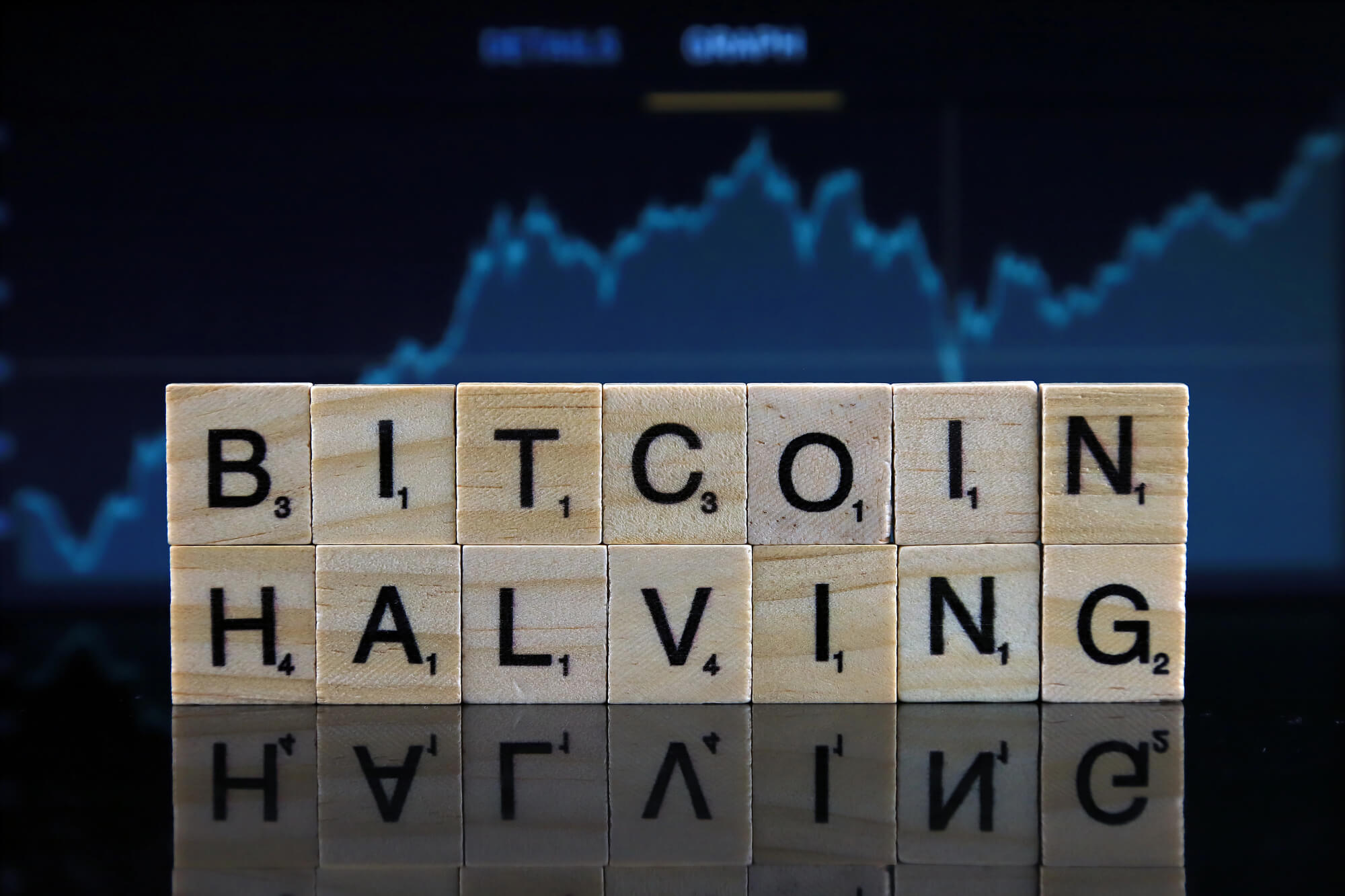
A summary weekly review of the events on the crypto markets with a focus on trend sectors, liquidity, volatility, spreads and more in cooperation with market data providers Kaiko.
Bitcoin was able to assert itself in the past week and rose 2.4%, while shares ended lower a week. In the meantime, the US stock exchange supervisory authority SEC postponed its decision on returns and stacking ETFs and published new disclosure guidelines for crypto issuers. This week we explore:
- The BTC performance one year after the halving
- MiCA-konformes Stablecoin-Volumen
- ETH-Staking-Indizes
Anniversary of Bitcoin-Halving: This time it was different
One year after the Halving 2024, Bitcoin is traded between $ 80,000 and 90,000, which represents the weakest performance after halving in terms of percentage growth. After earlier Halvings, Bitcoin usually recovered within 12 months: after the Halving 2012, the BTC course recorded an explosive increase of 7,000%, while the cycles in 2016 and 2020 made profits of 291% and 541%. So far, the cycle 2024 has remained behind this trend.
If you exclude the year 2012 to get an overview, the price dynamics, which normally set up nine months later, have been significantly removed.
This weak development fell together with increased macroeconomic uncertainty. In the 1st quarter of 2025, the global trade voltages tightened, and the risk of risk increased drastically. In the six months after the Halving, the index of economic policy uncertainty (Fred) was on average 317. In contrast, the index was 107 in 2012, in 2016 and in 2020 in 186 in the same periods after a halving.
However, regulatory clarity about digital assets in the United States is gradually arising, which could help reduce uncertainty and to restore the trust of investors in the cryptoma markets in the coming months.
Despite the ongoing market uncertainty, Bitcoin's price behavior in 2024 changed significantly. Its 60 -day price volatility has dropped greatly – from over 200% in 2012 to barely 50% today. While Bitcoin matures, it is now more likely that he will provide stable, although possibly more subdued returns compared to previous cycles.
The dynamics of the miners show a more differentiated picture. In April, the Hash rate of the Bitcoin network reached an all-time high, which indicates increased competition, either through an influx of new miners or the use of more efficient hardware. However, if the hash rate increases without a corresponding increase in the Bitcoin price, the miners' profit panels are pressed, which indicates a growing discrepancy between network security and price development.
The miners' revenue comes from BLOCK REWARDS and transaction fees. After Halving in 2024 the transaction fees briefly rose to a record high, which was mainly due to the introduction of the runes protocol, which increased the demand for block room by the output of fungil tokens. Since then, however, the BTC mining fees have decreased and are mainly below the block reward (3,125 BTC).
The growth of the miner fees has been remarkably steamed since the fourth halving. Since the block rewards have now been reduced by half, steady on-chain transaction activity is essential to offer the miners an incentive-especially if the price does not rise quickly enough. In the year since the Halving 2024, just more than 8,000 BTC were paid for transaction fees, compared to 37,000 BTC in the first year after the third Halving.
Mica-compliant stable coin volume reaches all-time high
Stablecoins, which are regulated as part of the EU regulation on markets for crypto-assets (mica), have proven to be remarkably resistant in the middle of the general market volatility and the volume growth of non-conformer stable coins outperformed.
The combined monthly volumes for USDC and EURC from Circle, EURI from Banking Circle and EURCV from Societe Générale have more than doubled since the beginning of 2024 and reached an all -time high of USD 209 billion in March 2025.
USDC are among the Mica-compliant stable coins still leading in the nominal volume. However, the stablecoins, which are stable in euros, have gained significantly in dynamics: From January 2024 to March 2025, EUR covered stable coins an increase in monthly volume by 363% compared to an increase of 43% in their USD-covered counterparts.
Despite this acceleration, the acceptance of EUR tablecoins in private customer sector is still restricted by high transaction fees and limited liquidity. For example, Coinbase raises significantly higher fees for EURC bills than for USDC, which could restrict wider use.
ETH-staking indices: soon?
After the rapid success of the spot ETFs in the United States last year, Bitcoin 2024 dominated the headlines. These funds even put the ETH ETFs in the shade, which also recorded impressive tributaries. The lack of staking in ETH funds partly explains the less interest in these products.
This could change in 2025 if the issuers try to change earlier submissions to the new US stock exchange inspectorate. And it is not just ETH that will benefit from it-there are a number of proof-of-stake assets that compete with ETF approval and of which many higher staking premiums offer than ETH.
In fact, Sol has consistently offered higher returns. Last week, the first spot products for this asset were launched in Canada, which also contain operational premiums. The demand for this fund was great. Cathie Woods Ark Invest bought shares in the Solq-ETF from 3IQ, which has already had an managed assets of almost 100 million CAD.
